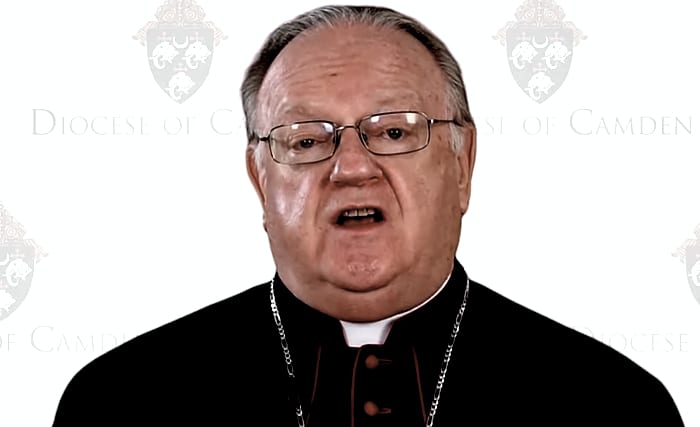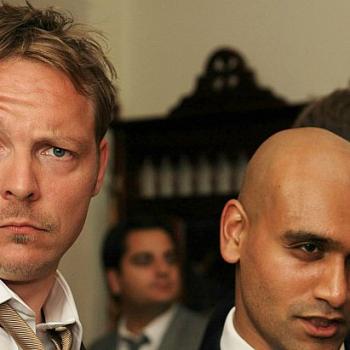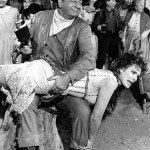
WHEN it was announced last Thursday that Roman Catholic Diocese of Camden in New Jersey, headed by Bishop Dennis J Sullivan, above, was filing for bankruptcy, people immediately began asking where this will leave victims of clerical abuse who were in line for compensation.
Well, it looks as if their claims could either go unresolved, or fall well below expectations.
According to The Philadelphia Inquirer, more than two-thirds of victims who signed up to participate in a fund set up by the Diocese to compensate victims have been left with “diminished expectations of seeing a payout.”
Last year 141 people who were encouraged by Sullivan to come forward and recount their experiences of abuse for fund administrators must now join a line of other creditors – including banks, independent contractors – to jostle in court over a limited pot of money that will be divided up by the bankruptcy court.
In announcing the move to become the first diocese in New Jersey to seek Chapter 11 protection from creditors, church leaders said their intent was not to dodge their responsibility to abuse victims, but rather to ensure a future for the institution that serves South Jersey’s nearly half-million Catholics.
In a declaration filed witha bankruptcy judge, Rev Robert E Hughes, the diocese’s Vicar General, wrote:
The diocese does not seek bankruptcy relief to hide the truth or deny any person a day in court. But beyond its obligation to creditors, the diocese has a fundamental and moral obligation to the Catholic faithful it serves [and] the greater community.… In order to do this, the diocese must survive.
Victims and their lawyers slammed the move saying they believed they’d been victimised again – this time by a bait-and-switch ploy.
Said victim attorney Rita Gribko:
The diocese first betrayed survivors when church leadership protected their priests over the children these priests harmed, then canceled their compensation program. Now, this bald-faced, self-interested legal tactic is yet another betrayal.

Clergy sex abuse activist Robert Hoatson, founder of the victims’ group Road to Recovery(R2R), said he was sexually abused by a priest in West Orange, New Jersey, in the 1960s.
Hoatson said, they’d been promised “every individual victim would have their opportunity to tell their story and then be compensated” if they participated in the victim compensation fund.
Now, these individuals become part of a pool, and they’re not treated now as individuals. Bankruptcy tends to lower the amounts that will be given.
Hoatson, who has a PhD from Fordham University, was ordained as a Roman Catholic priest in 1997. After founding Road to Recovery, he began to expose clergy sexual-abuse cases and cover-ups.
His superiors in the priesthood objected and ordered him to cease R2R activities. But Hoatson believed his work with victims of sexual abuse and their families was his calling. He would not back down. In time, he was suspended from performing priestly ministry and the Vatican granted his voluntary removal from the priesthood in 2011.
Signs of the diocese’s strained finances had been evident for months. Sullivan prematurely suspended the Camden church’s participation in the victim compensation fund in July, citing a “precipitous decline in revenue” due to COVID-19 and a rash of sex abuse lawsuits enabled by recent changes to New Jersey’s civil statute of limitations. The fund had paid out a total of $8.1 million to 71 victims by the time it was shuttered.
The financial strain only continued to grow over the next several months, the bishop said, prompting the bankruptcy declaration.
The diocese’s court filings Thursday revealed for the first time the extent of those pressures.
Hit with fresh lawsuits
In the nine months since New Jersey opened a temporary two-year window granting victims of decades-old abuse a second chance to sue, the diocese has been hit with 52 new lawsuits. By comparison, it faced only 99 viable legal claims in all of the previous 30 years, the filings said.
Sullivan announced the Independent Victim Compensation Fund last year, hoping it would serve as a stopgap to fend off some of those suits by offering settlements determined by outside administrators and sparing victims from having to prove their abuse in drawn-out public court proceedings.
When the bishop halted that programme this summer, church officials and fund administrators declined to say how many victims who had signed up for that offer were left hanging.
But according to Thursday’s bankruptcy filings, only one-third, or 71 of the participants, received a payout. Proposed settlements had been extended to 21 more and the claims of 120 were left unprocessed before the programme ended, court papers said.
In the coming months, the court, working with an oversight committee that will likely include at least some lawyers for abuse victims, will decide how much money will be made available for splitting up those who are owed and how much will stay protected by the bankruptcy process.
Church officials told the court in their filings on Thursday that the diocese had more than 200 known creditors, including clergy sex abuse victims, and estimated liabilities of $25.7 million, including a $2.4 million loan it took out as part of the federal Paycheck Protection Program in April.
They listed $53.6 million in property assets, including the diocesan headquarters, as well as bank accounts, cars, and several items of jewelry.
As they are separate legal entities under state law, the bankruptcy is not expected to affect any of the 62 parishes and 29 schools the diocese oversees across Atlantic, Camden, Cape May, Cumberland, Gloucester and Salem Counties.

 I’d love a cup of coffee
I’d love a cup of coffee













